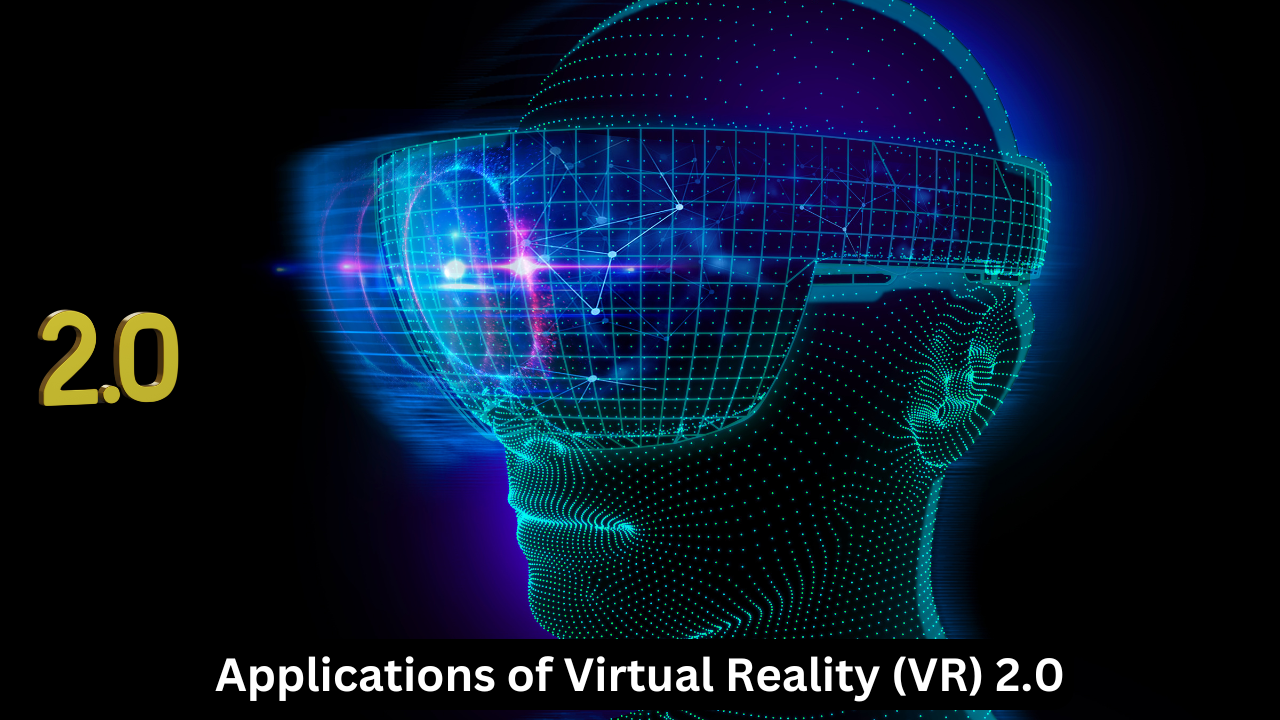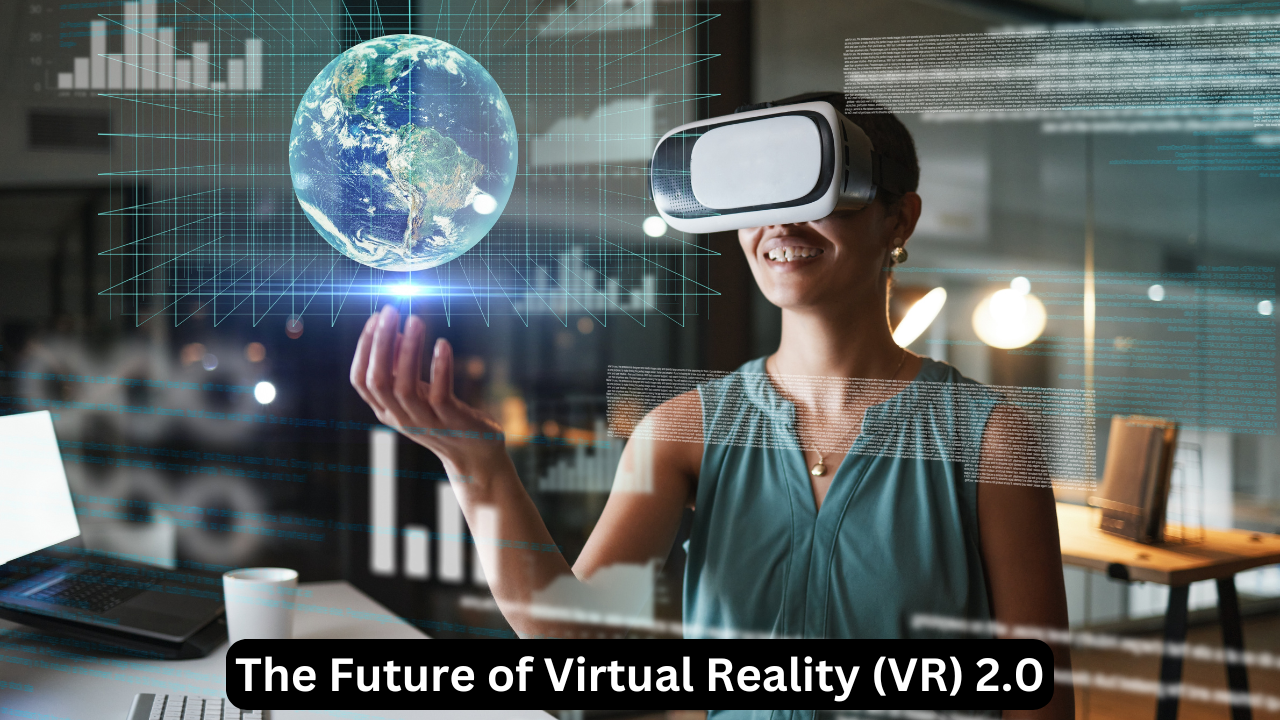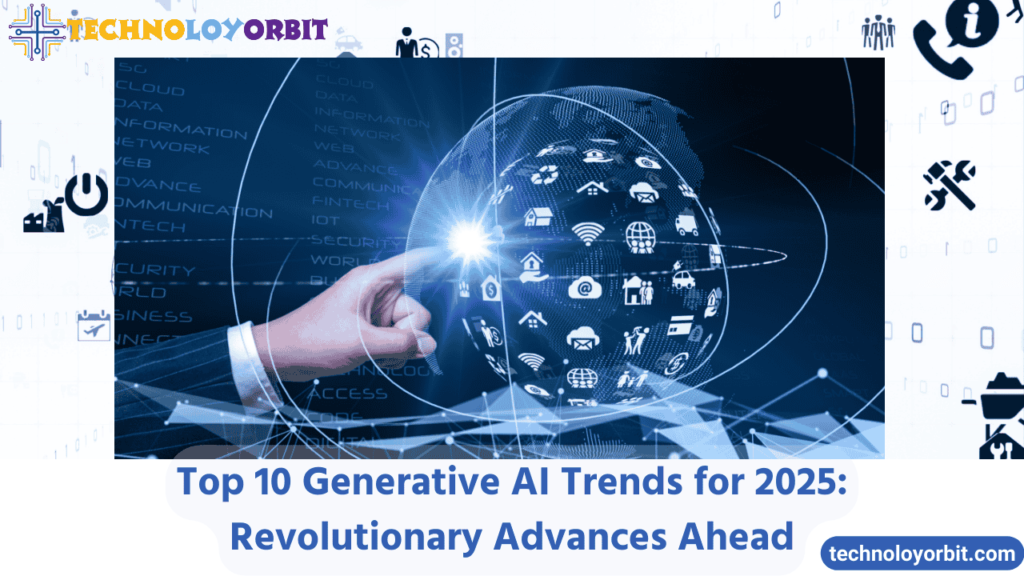Virtual Reality (VR) 2.0 combines advanced AI, cloud computing, and enhanced hardware to deliver highly immersive, realistic experiences across industries like entertainment, healthcare, and education.
Virtual Reality (VR) has transcended its early iterations, evolving into what is now termed Virtual Reality (VR) 2.0. This next generation of VR technology is more than just a visual and sensory experience; it integrates advanced capabilities like AI, cloud computing, and enhanced hardware to deliver truly immersive environments. In this article, we will explore what makes VR 2.0 revolutionary, its applications, challenges, and how it is shaping the future of technology. Whether in entertainment, healthcare, or education, Virtual Reality (VR) 2.0 is set to redefine the boundaries of digital interaction.
What is Virtual Reality (VR) 2.0?

A New Era of Immersive Technology
Virtual Reality (VR) 2.0 builds upon its predecessor by incorporating advanced features that heighten user engagement. Unlike traditional VR, VR 2.0 leverages artificial intelligence (AI) to create adaptive environments, making interactions more natural and realistic. Furthermore, cloud integration ensures seamless accessibility and scalability of VR experiences.
Key Characteristics of VR 2.0:
- Improved Visual Fidelity: 4K and 8K resolutions provide lifelike graphics.
- AI Integration: AI personalizes environments based on user behavior.
- Haptic Feedback: Enhanced sensory input for a more immersive experience.
- Cloud Computing: Enables lightweight devices with powerful processing capabilities.
These advancements make VR 2.0 suitable for applications beyond gaming, extending its reach to industries like education, medicine, and real estate.
The Technological Advancements Powering Virtual Reality (VR) 2.0
1. Enhanced Hardware
The hardware behind Virtual Reality (VR) 2.0 has undergone significant upgrades. Modern VR headsets feature lighter designs, higher resolutions, and wider fields of view. These devices are equipped with eye-tracking technology, allowing for more precise user input.
Comparison of Traditional VR vs. VR 2.0 Hardware:
| Feature | Traditional VR | VR 2.0 |
|---|---|---|
| Resolution | 1080p-2K | 4K-8K |
| Tracking Accuracy | Basic Positional | Eye and Gesture Tracking |
| Weight | Heavy and Bulky | Lightweight and Ergonomic |
| Connectivity | Tethered | Wireless with Cloud Support |
2. Artificial Intelligence (AI)
AI plays a pivotal role in Virtual Reality (VR) 2.0, offering dynamic interactions. For example, virtual characters in VR can respond to users’ actions in real time, creating an environment that feels alive. AI also helps analyze data to improve the VR experience continuously.
Applications of Virtual Reality (VR) 2.0

1. Revolutionizing the Entertainment Industry
With VR 2.0, movies and games are no longer passive experiences. Users can interact with characters, explore virtual worlds, and become part of the narrative. Platforms like Meta Horizon and SteamVR are already incorporating VR 2.0 technology to deliver richer content.
Key Benefits for Entertainment:
- Fully immersive storylines.
- Multiplayer VR environments.
- Realistic visuals and sounds.
2. Transforming Education
Virtual Reality (VR) 2.0 is becoming an indispensable tool in education. By simulating real-world environments, students can learn complex subjects like anatomy or history interactively. For example, a VR 2.0 simulation of ancient Rome lets students experience history firsthand.
Benefits for Education:
- Improved retention through visual learning.
- Safe and controlled training environments.
- Accessibility for remote learners.
3. Healthcare Innovations
In the medical field, Virtual Reality (VR) 2.0 is used for surgical training, patient therapy, and even pain management. For instance, VR simulations allow surgeons to practice complex procedures in a risk-free environment.
Applications in Healthcare:
- Virtual surgeries for training.
- PTSD and anxiety management through immersive therapy.
- Enhanced patient-doctor communication.
Challenges Facing Virtual Reality (VR) 2.0
1. Accessibility and Affordability
While the technology is groundbreaking, the cost of VR 2.0 devices and software can be prohibitive. Ensuring affordability will be crucial for widespread adoption.
Solution: Manufacturers are focusing on producing more affordable headsets while utilizing cloud computing to lower hardware costs.
2. Cybersecurity Risks
With the integration of AI and cloud computing, VR 2.0 systems are vulnerable to cyberattacks. Personal data collected during VR interactions could be exploited.
Solution: Robust encryption protocols and user awareness programs are essential to mitigating cybersecurity risks.
3. Motion Sickness
Some users still experience motion sickness in VR environments, especially during extended usage.
Solution: Modern VR 2.0 systems incorporate motion stabilization and frame-rate synchronization to reduce discomfort.
The Future of Virtual Reality (VR) 2.0

What Lies Ahead?
The evolution of Virtual Reality (VR) 2.0 is far from over. With the advent of 5G connectivity, the VR experience will become even more seamless. Furthermore, industries like retail and tourism are beginning to explore the potential of VR 2.0, allowing customers to shop or travel virtually.
Key Trends to Watch:
- Integration with Augmented Reality (AR) for mixed-reality experiences.
- Enhanced social VR platforms for remote collaboration.
- Wider adoption in sectors like real estate and military training.
FAQs on Virtual Reality (VR) 2.0
1. What is the main difference between VR and VR 2.0?
VR 2.0 incorporates advanced features like AI, cloud computing, and haptic feedback, offering a more immersive and personalized experience compared to traditional VR.
2. What industries benefit most from Virtual Reality (VR) 2.0?
Industries like gaming, education, healthcare, real estate, and tourism benefit significantly from the advancements in VR 2.0 technology.
3. Is Virtual Reality (VR) 2.0 affordable?
Currently, VR 2.0 can be expensive due to high-end hardware and software requirements, but efforts are underway to make it more accessible.
4. Can Virtual Reality (VR) 2.0 cause motion sickness?
While motion sickness remains a challenge, modern VR 2.0 systems use advanced stabilization techniques to minimize discomfort.
5. How does AI enhance Virtual Reality (VR) 2.0?
AI enables adaptive environments, realistic virtual characters, and personalized user experiences in VR 2.0.
6. Can VR 2.0 be used for remote work?
Yes, Virtual Reality (VR) 2.0 offers immersive virtual offices and collaboration tools, making remote work more interactive.
7. What are the cybersecurity risks in VR 2.0?
Cybersecurity risks include data breaches and unauthorized access to user data. Robust security measures can mitigate these risks.
8. How does VR 2.0 impact education?
VR 2.0 enhances education by offering interactive and immersive learning experiences, improving engagement and retention.
Conclusion
Virtual Reality (VR) 2.0 is a transformative technology that holds immense potential across multiple industries. Its blend of advanced hardware, AI, and cloud computing creates experiences that were once the stuff of science fiction. While challenges like affordability and cybersecurity persist, the future of VR 2.0 looks promising. As this technology continues to evolve, it is poised to redefine how we interact with the digital and physical worlds. Please follow out blog Technoloyorbit.



